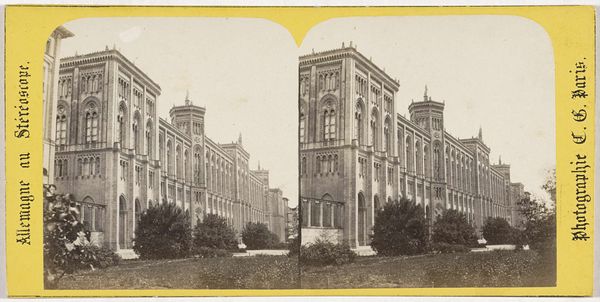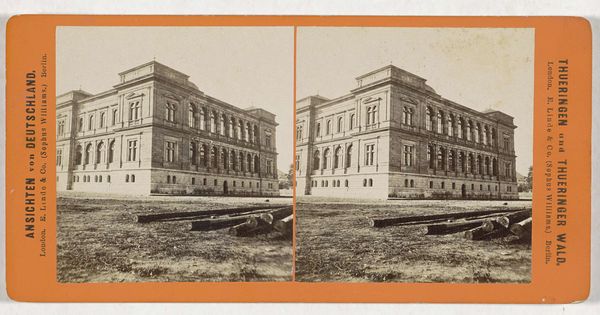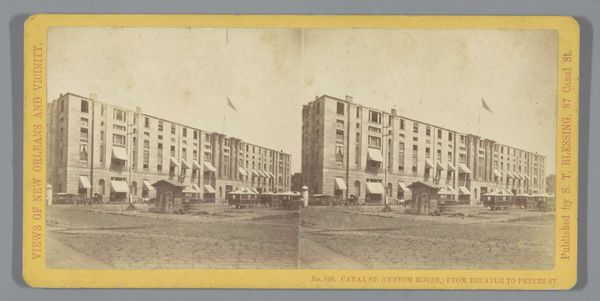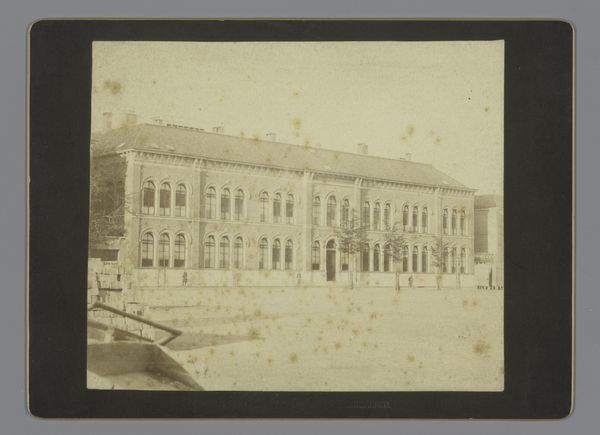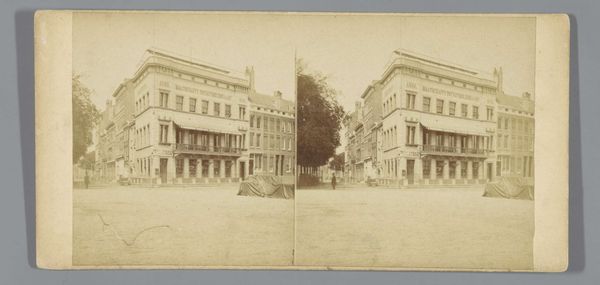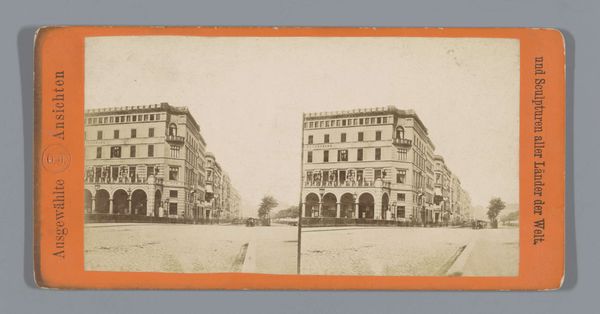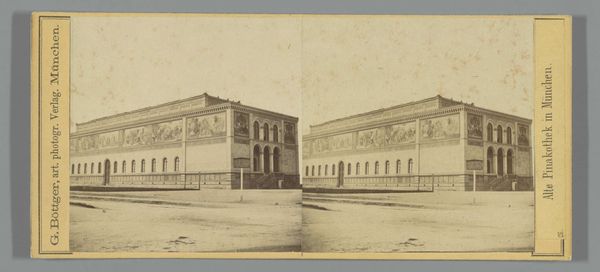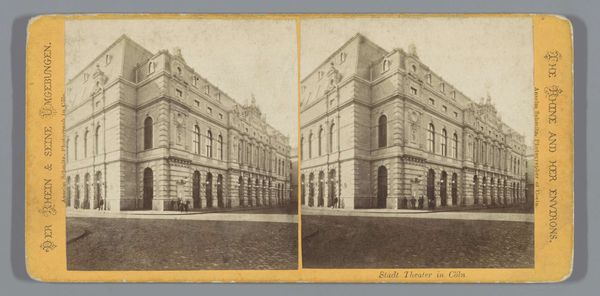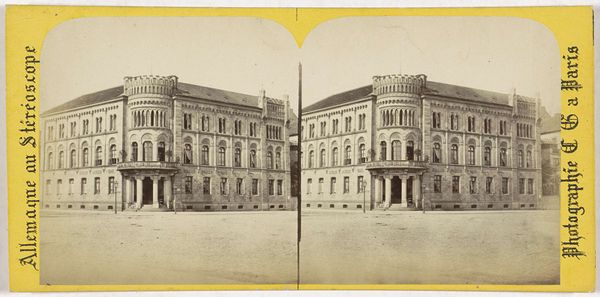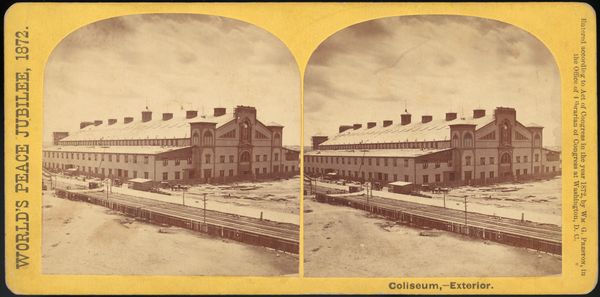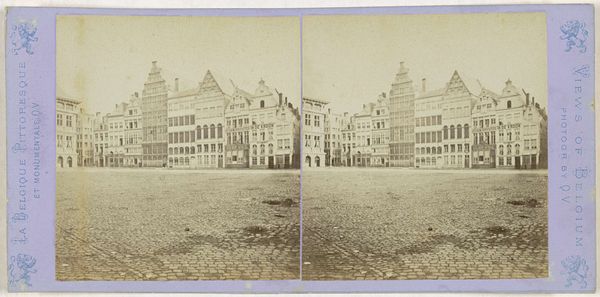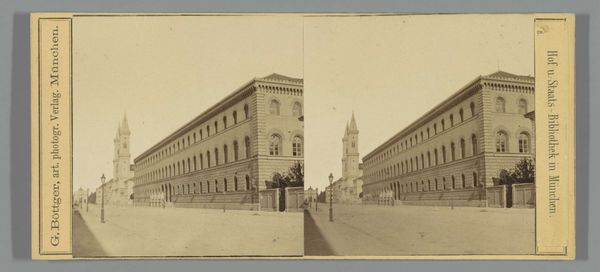
print, photography, gelatin-silver-print
# print
#
photography
#
historical fashion
#
gelatin-silver-print
#
cityscape
#
modernism
Dimensions: height 85 mm, width 170 mm
Copyright: Rijks Museum: Open Domain
Curator: Let’s turn our attention to this intriguing gelatin-silver print by Sophus Williams, taken in 1876. It’s titled “Exterior of the Seamen's House in Hamburg.” Editor: It has an austere beauty. The starkness of the building is softened somewhat by what appears to be a slightly overgrown slope at its base, giving it an almost stage-set quality. What was the purpose of such a place? Curator: Seamen's houses historically provided lodging, support, and sometimes even vocational training for sailors passing through port cities. They were often tied to missions or charitable organizations, attempting to offer a safe alternative to less reputable establishments. In the context of 19th-century Hamburg, this particular building represents a period of significant growth in global trade, particularly for Germany after unification. Editor: So this is an emblem of imperial expansion, even within the visual language? It reflects the port's transformation during a time when Germany sought its place on the global stage. The Seamen's House then wasn't simply a refuge; it was deeply intertwined with economic and political projects of the nation. It reflects both philanthropic ideals and very pointed commercial endeavors. Curator: Precisely. Consider the architectural choices; it is massive and utilitarian, reflecting the industrial spirit and a desire to address the welfare, as they saw it, of those who fueled that economy. It shows a desire to shape behavior, with clear class assumptions woven into the structure itself. What social impact would it have? Editor: The building’s almost regimented design makes me think of Foucault and discourses around power and control. How were the sailors who occupied this space managed, disciplined, and surveyed? This image inadvertently presents the house’s latent ideology: this is what you get when you're on the right side of labor; this is what is in store for you when you’re deemed as a "contributor”. Curator: Absolutely. The image reveals the city's shifting social landscape and its evolving understanding of labor, mobility, and perhaps, a moral agenda, as well. Sophus Williams’s composition underscores these tensions between the individual and the institutional. It’s an imposing statement. Editor: Indeed. By looking at it, it becomes hard to separate image and ethics. This picture encapsulates complex narratives about globalization, philanthropy, labor, and control—the perfect image of a very particular historical moment in time.
Comments
No comments
Be the first to comment and join the conversation on the ultimate creative platform.
